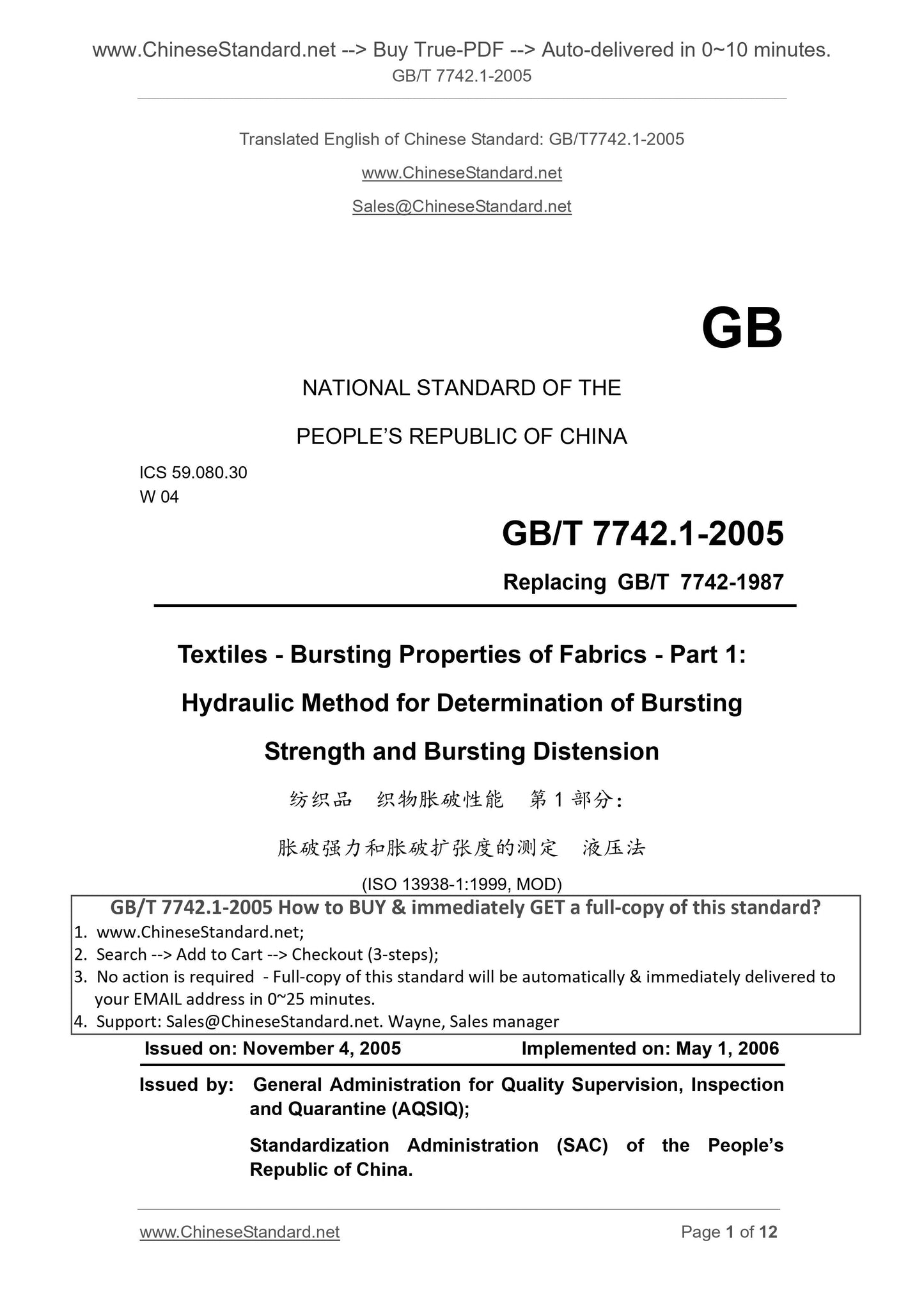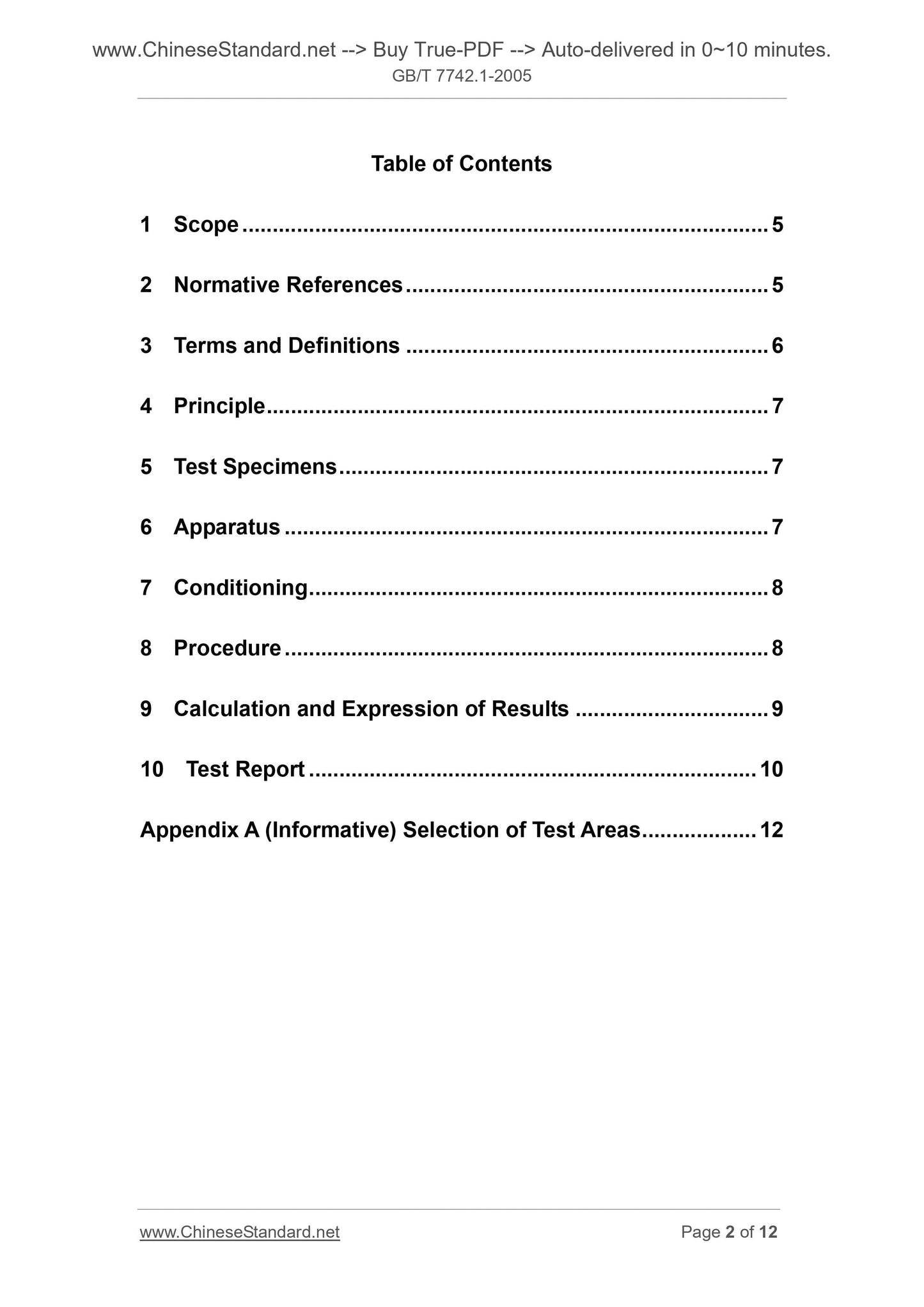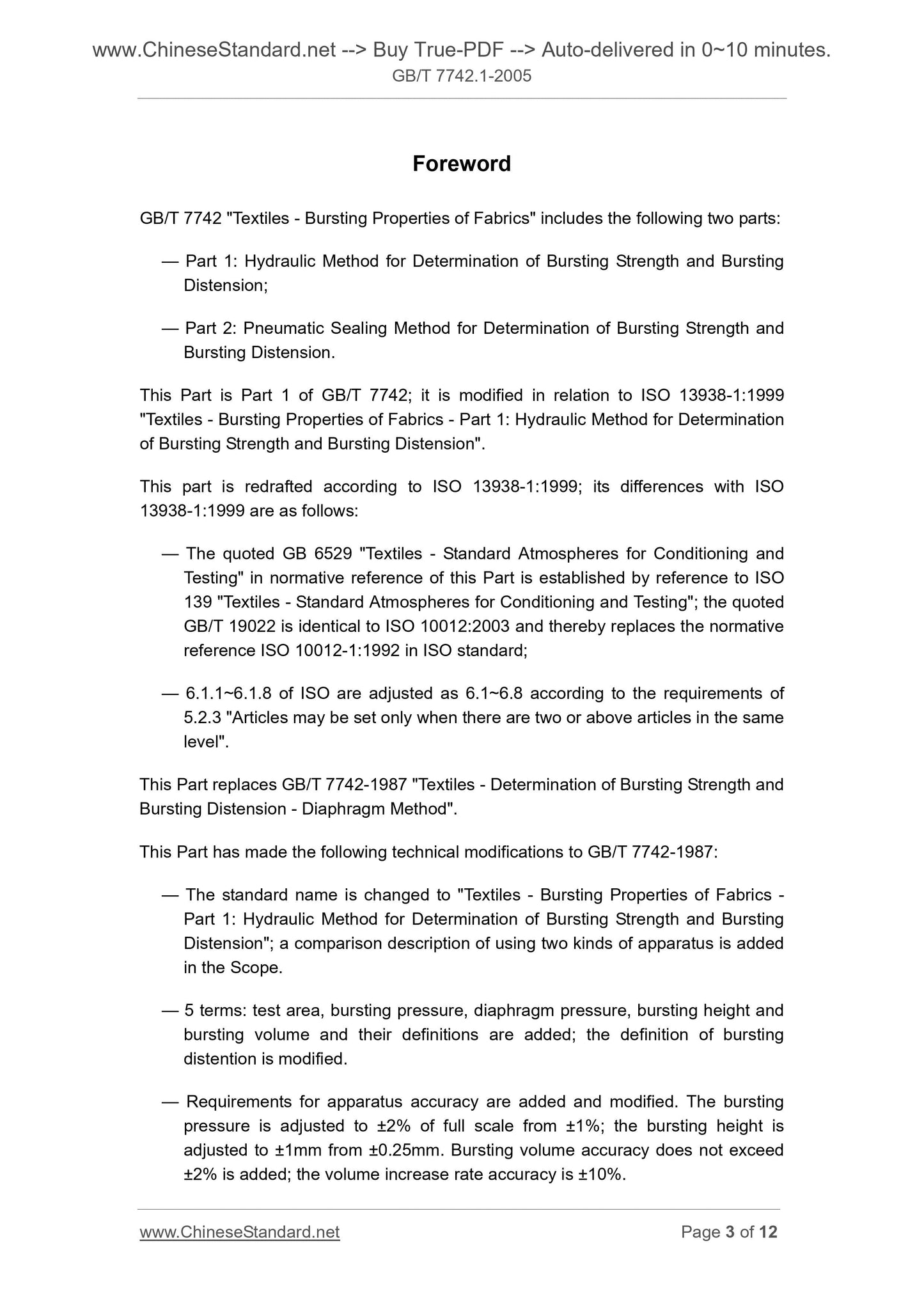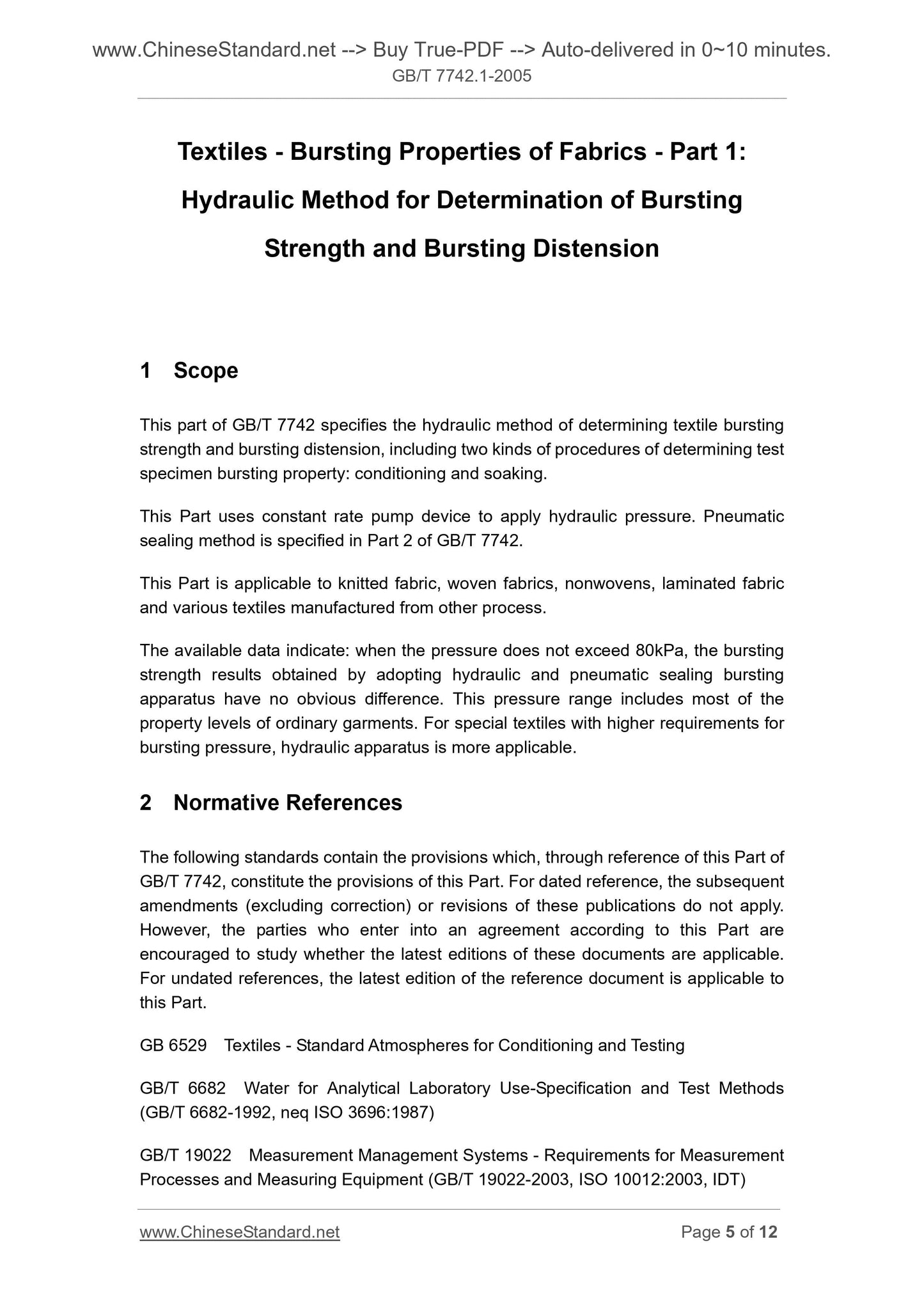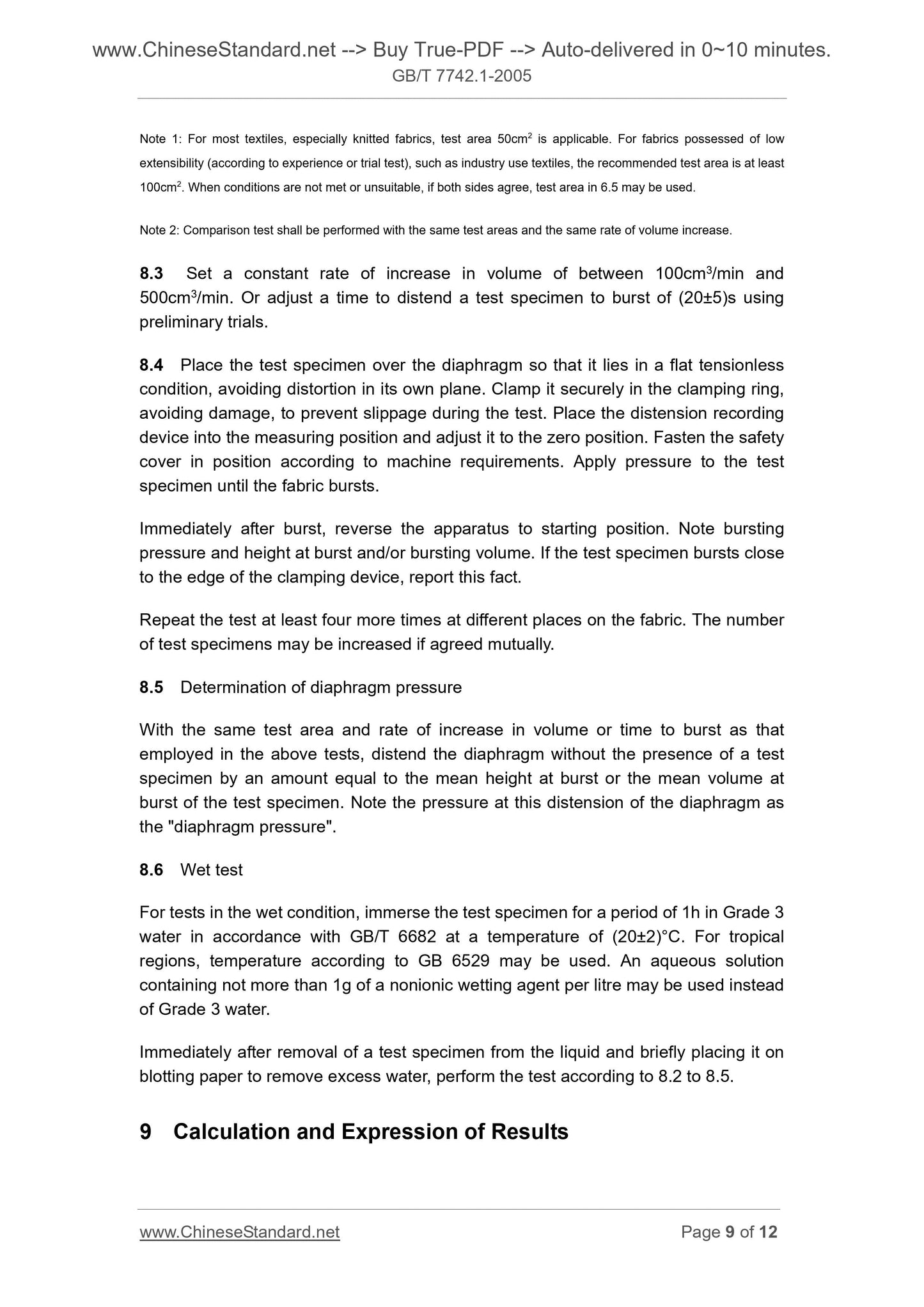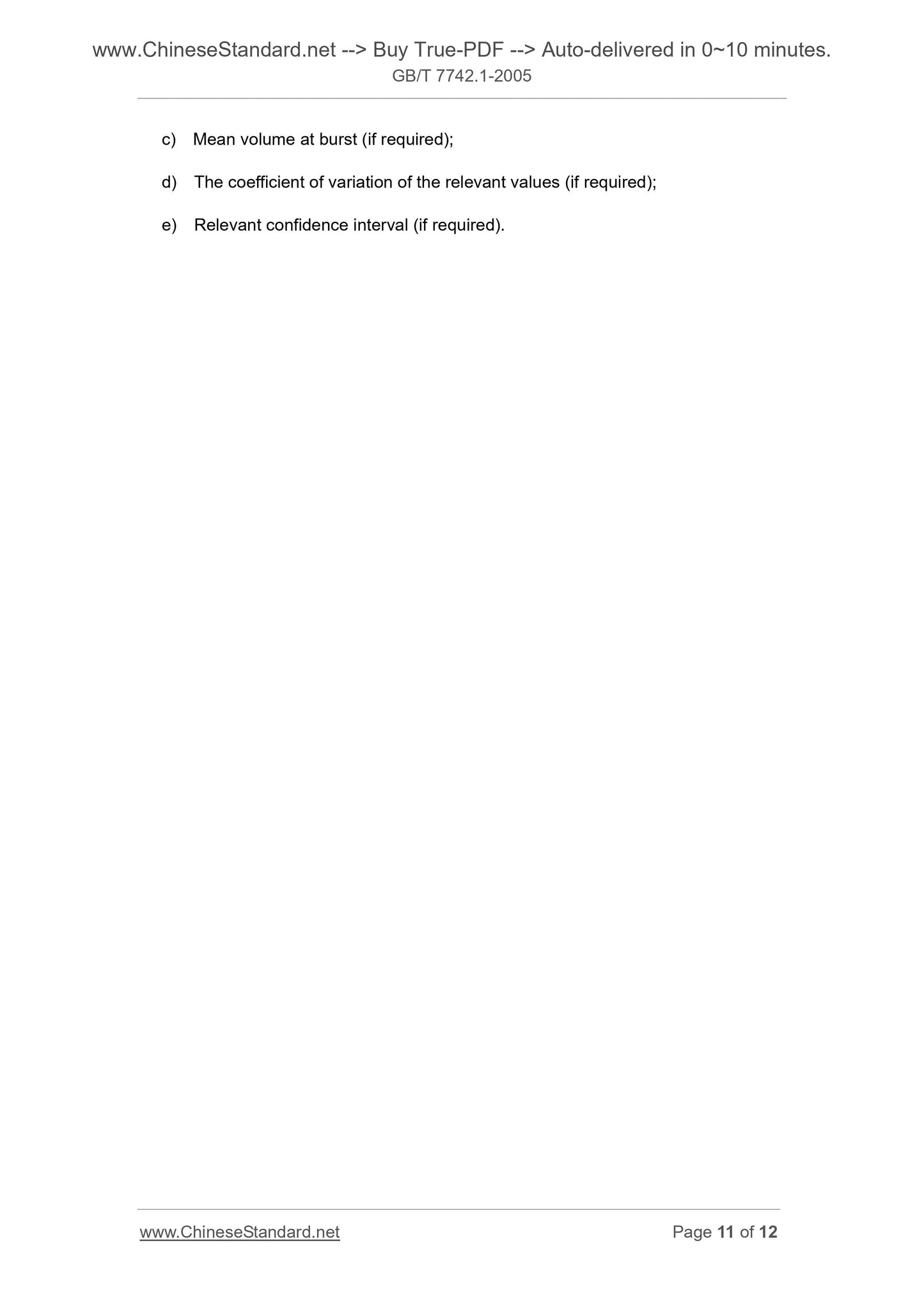1
/
of
7
www.ChineseStandard.us -- Field Test Asia Pte. Ltd.
GB/T 7742.1-2005 English PDF (GB/T7742.1-2005)
GB/T 7742.1-2005 English PDF (GB/T7742.1-2005)
Regular price
$70.00
Regular price
Sale price
$70.00
Unit price
/
per
Shipping calculated at checkout.
Couldn't load pickup availability
GB/T 7742.1-2005: Textiles -- Bursting properties of fabrics -- Part 1: Hydraulic method for determination of bursting strength and bursting distension
Delivery: 9 seconds. Download (and Email) true-PDF + Invoice.Get Quotation: Click GB/T 7742.1-2005 (Self-service in 1-minute)
Newer / historical versions: GB/T 7742.1-2005
Preview True-PDF
Scope
This part of GB/T 7742 specifies the hydraulic method of determining textile burstingstrength and bursting distension, including two kinds of procedures of determining test
specimen bursting property. conditioning and soaking.
This Part uses constant rate pump device to apply hydraulic pressure. Pneumatic
sealing method is specified in Part 2 of GB/T 7742.
This Part is applicable to knitted fabric, woven fabrics, nonwovens, laminated fabric
and various textiles manufactured from other process.
The available data indicate. when the pressure does not exceed 80kPa, the bursting
strength results obtained by adopting hydraulic and pneumatic sealing bursting
apparatus have no obvious difference. This pressure range includes most of the
property levels of ordinary garments. For special textiles with higher requirements for
bursting pressure, hydraulic apparatus is more applicable.
Basic Data
| Standard ID | GB/T 7742.1-2005 (GB/T7742.1-2005) |
| Description (Translated English) | Textiles - Bursting properties of fabrics - Part 1: Hydraulic method for determination of bursting strength and bursting distension |
| Sector / Industry | National Standard (Recommended) |
| Classification of Chinese Standard | W04 |
| Classification of International Standard | 59.080.30 |
| Word Count Estimation | 8,886 |
| Date of Issue | 2005-11-04 |
| Date of Implementation | 2006-05-01 |
| Older Standard (superseded by this standard) | GB/T 7742-1987 |
| Quoted Standard | GB 6529; GB/T 6682; GB/T 19022 |
| Adopted Standard | ISO 13938-1-1999; MOD |
| Regulation (derived from) | Announcement of Newly Approved National Standards No. 13 of 2005 (No. 87 overall) |
| Issuing agency(ies) | General Administration of Quality Supervision, Inspection and Quarantine of the People Republic of China, China National Standardization Administration Committee |
| Summary | This standard specifies: Determination of fabric bursting strength and bursting distension hydraulic methods, including the determination of both samples humidity and wet burst performance program. The standard uses a fixed speed pump means for applying hydraulic pressure. Pressure method in GB/T 7742 Part 2 requirements. This standard applies to: knitted, woven, non-woven fabric and laminated fabrics, also applies to the other process manufacturing all kinds of fabrics. Now data show, under pressure when more than 80kPa, bursting with hydraulic and pneumatic equipment to get the two there is no significant difference in bursting strength results. This pressure range includes the most ordinary clothing performance levels. For higher pressure required to burst special textiles, hydraulic instrument more applicable. |
Share
